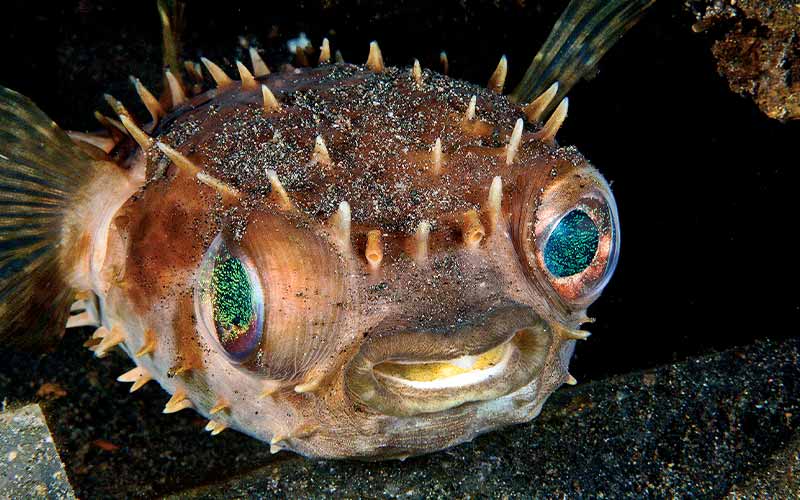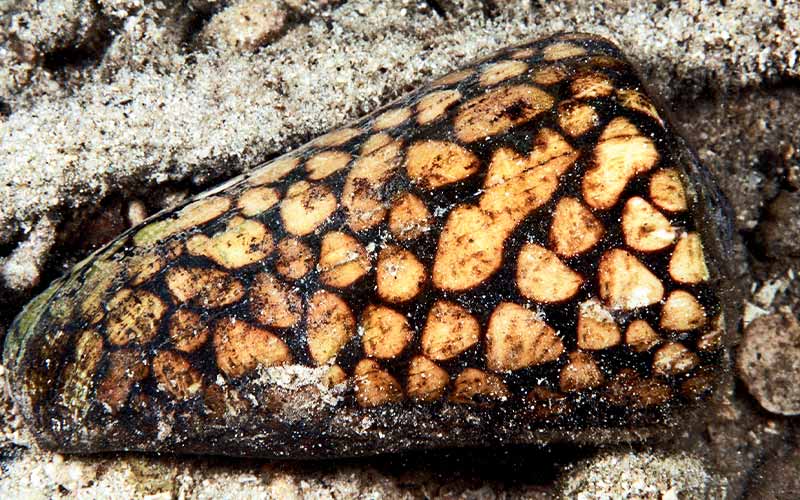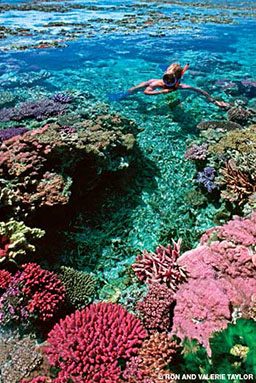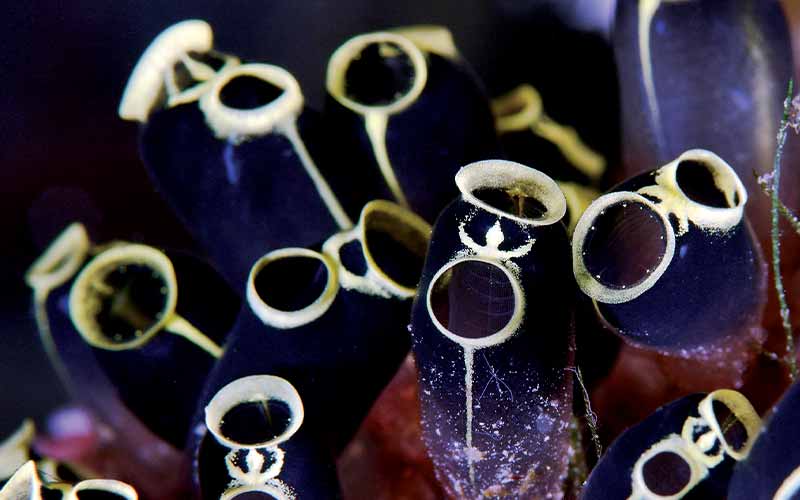Coral reefs — some of our planet’s most spectacular yet fragile centers of life — have an unlikely and powerful new ally: the pharmaceutical industry. As the effectiveness of antibiotics declines and doctors seek more reliable and potent medications for their patients, researchers are looking to the inhabitants of coral reefs for compounds that can be used to combat a long list of diseases including cancer, Alzheimer’s, leukemia and AIDS.
Environmentalists have long advocated conservation of coral reefs for reasons ranging from preserving marine biodiversity to generating tourism. But the fact that coral reefs could provide an arsenal of miracle drugs is one of the most compelling arguments to date.
An Enormous Pharmaceutical Vista
According to chemists at Cornell University Medical Center, the ocean has tremendous pharmaceutical potential, in part because it contains billions of organisms that do not exist on land. In a recent survey conducted by the National Cancer Institute, 2 percent of terrestrial specimens studied contained new compounds, while almost half of the marine samples revealed chemical novelties. Currently, more than half of all cancer research is focused on finding cures from marine sources.
Coral reefs are particularly valuable storehouses of genetic material; estimates of the number of plants and animals living in reef ecosystems range from 600,000 to more than 9 million species. According to Shirley Pomponi, executive director of the Cooperative Institute for Ocean Exploration, Research and Technology, “Coral reefs have enormous biodiversity, and as such they hold unlimited potential for the discovery of chemicals that can be developed into drugs. Coral reefs are now being discovered even in the deep ocean. These resources are totally untapped, and marine drug research is constantly evolving.”
The History of Marine Pharmacology
Humans have looked to the sea for medicines for thousands of years. The ancient Phoenicians, Egyptians, Greeks and Romans all documented their use of the ocean as a source of elements that could promote health and cure disease. Marine plants were considered to have medicinal value as far back as 5,000 years ago; both the Japanese and Chinese used them to treat goiter and other glandular diseases. The early Romans used seaweeds to treat burns, rashes and wounds, and more recently British sailors ate red marine algae to prevent scurvy.
In modern times, medical researchers have made many remarkable discoveries by studying marine life. The first landmark breakthrough occurred in the early 1950s when Werner Bergmann extracted and isolated antiviral substances from a Caribbean sponge he found off the coast of Florida. Chemicals from this sponge led to the development of several drugs used to fight cancer, leukemia, HIV and herpes.
In the following decades, research confirmed many marine organisms contain antibiotics, polysaccharides, steroids, toxins and other substances that have helped in the management of a range of human diseases. As researchers look ahead, the inhabitants of coral reefs offer new directions to proceed in the fight against major diseases like cancer. Reef species are also believed to contain compounds that will be used alleviate or prevent a variety of other conditions including psoriasis, arthritis, pain, high cholesterol, high blood pressure, ulcers, bacterial infections, wounds, burns, goiter and glandular diseases, bleeding and even constipation and sunburn.

Funding for Marine Medical Research
To procure these substances, marine pharmaceutical expeditions are under way around the world. The process of bringing a new drug to market is long and expensive; the pharmaceutical industry reports it can take as long as 15 to 20 years and cost as much as $800 million. First, compounds must be harvested, extracted and then isolated or purified for lab study. Researchers employ screening techniques to evaluate therapeutic activity and identify the specific chemicals responsible for the desired activity. Organic synthesis is used to ensure a supply. If the results of preliminary tests are positive, clinical trials are conducted on human subjects and the company applies for a patent. The Pharmaceutical Research and Manufacturers of America notes that for every 5,000 novel compounds found to have biomedical potential, only five make it into clinical trials, and only one will receive final approval for commercial patient use.
Given the enormous cost of marine pharmacology, marine medical research and development is usually a partnership among government agencies, research institutes and private corporations. The drug companies play a critical role, not only subsidizing the cost of research but also providing the business expertise to navigate the long and expensive road to bringing new products to market and making them profitable.
China, Japan, Colombia and Brazil are investing heavily in marine drug research, and the European Union just approved an €8 million ($10.7 million) budget. In the U.S., the National Oceanic and Atmospheric Administration’s (NOAA’s) National Undersea Research Program is the primary source of marine drug research, and its budget is very limited. But since many of the marine compounds being sought are for cancer cures, the National Cancer Institute (NCI), part of the National Institutes of Health, provides additional funding. The most extensive marine drug research in the U.S. is being done at Scripps Institution of Oceanography in California, Harbor Branch Oceanographic Institute in Florida, University of California Santa Cruz, University of Mississippi and University of Alabama.
The roster of private companies spending billions of dollars to obtain marine miracle drugs is a “Who’s Who” of U.S. Fortune 100 pharmaceutical companies. The largest four — Pfizer Inc., Johnson & Johnson, Merck & Co. Inc. and Abbott Laboratories — spend the most, and Novartis, Aventis, Eli Lilly, Inflazyme Abbott, Wyeth and Taiho Pharmaceuticals are also heavily invested. Even the cosmetics giant Estée Lauder has a vested interest in marine pharmacology; it uses an anti-inflammatory chemical from a seafan in one of its best-selling skin-care products.
Coral Reef Inhabitants in the Underwater Pharmacy
Coral reefs are systems composed not only of corals and the physical structures of their remains but also of millions of living organisms including fish, marine plants, sponges, mollusks, algae and more. Of the chemicals extracted from marine life so far, the most biologically potent are the poisons primitive creatures use for self protection. Some reef dwellers of particular interest are invertebrates such as sponges, tunicates, bryozoans and octocorals, which are permanently attached to some surface. Since they are immobile, it is necessary for them to produce compounds for either attracting prey or repelling predators, for reproduction and other purposes. Many of these chemicals have been found to have antibiotic, anti-inflammatory and anti-cancer properties and are therefore highly valued by drug companies.
Venomous species such as stonefish, sea snakes, box jellyfish, cone snails and pufferfish contain some of the most toxic compounds known to man. The chemical compounds present in these organisms are being studied by researchers, and some have already been used to develop medicines and cosmetics. Here is an overview of some of the key discoveries in the “pharmacy of the sea” to date.
Algae

Algae range in size from microscopic, single-celled organisms to 150-foot-long kelp stalks. In 1981 researchers at the Harvard School of Public Health discovered that feeding Laminaria, a genus of kelp, to laboratory animals partially immunized them against breast cancer tumors. Pharmocologists at the John A. Burns School of Medicine in Honolulu discovered that the Undaria pinnatifida kelp, popularly known as wakame, enhanced immune cell activity and helped prevent and even cure lung cancer when injected into mice. Doctors at the Johns Hopkins School of Medicine believe that an acid in certain types of algae resembles the transmitter substance that activates animal nerve cells, and they hope to apply it to studies of neuromuscular disorders.
Algal toxins were known by humans as long ago as ancient Egypt. In the Old Testament, Moses described the waters turning to blood and stinking from dying fish. Scientists today speculate Moses was describing an incident of red tide, in which reddish dinoflagellates reached such proportions they killed the fish in the water by using up the available oxygen and producing a neurotoxin that renders filter-feeding shellfish poisonous to humans. This same toxin has been found to inhibit the growth of most types of bacteria and is currently being used experimentally to combat bacterial diseases.
Martek Biosciences Corp. is studying another algae derivative — an unusual fatty acid similar to that in the retina and the brain’s gray matter. Its initial commercial use will be as an additive for infant formula. Marine pharmacologists have also extracted alginic acid from algae and seaweeds and have made salts (alginates) with a variety of medicinal properties. Some help tablets disintegrate more rapidly in the stomach. Others form the basis of anti-clotting drugs (sulfated lamarin) and of preparations used to help control bleeding (calcium alginate). Sodium alginate has the exciting ability to reduce humans’ absorption of radioactive strontium, the most dangerous byproduct of radiation fallout, by about 90 percent.
Pufferfish
A delicacy in Japan, where it is called “fugu,” the pufferfish is another carrier of a potent marine neurotoxin. Chefs must undergo extensive training to learn to prepare it safely. Pufferfish contain tetrodotoxin, a powerful blocking agent that acts on muscles, sensory nerves and motor nerves and is 275 times more toxic than cyanide. The skin, gonads and viscera of the pufferfish are so deadly to humans that death can occur within 15 minutes of ingestion. Oddly, this same deadly toxin is also commercially available in an antispasmodic drug for people with seizure disorders and to help relieve the agony of terminal cancer.
Cone Snails
Cone snails, beautifully patterned creatures that most divers know not to touch, fend off their would-be attackers by ejecting a venomous tooth that penetrates the predator’s skin with a lethal toxin. The toxin is a muscle relaxant that causes breathing to slow down and potentially stop. Scientists at the University of the Philippines discovered that one protein in the toxin of the snail Conus geographus interfered with nerve function in such a way as to make it a potential painkiller. Derivatives of this toxin are being used for patients whose muscles are in a state of convulsion or who have nerve damage.

Filipino pharmacologists have also discovered a cone-snail poison that is 1,000 times more powerful than morphine in treating certain kinds of chronic pain. The snail-derived drug, Prialt™, was developed by Elan Corp., which later sold it to Azur Pharma. Prialt impairs nerve transmission in the spinal cord and blocks certain pain signals from reaching the brain. Scientists predict that many more cone-snail toxins will be drug leads since there are 500 known species of this animal.
Hagfish
The hagfish is an interesting creature in that it has three hearts, only one of which is controlled by direct nerve connections to the brain. A chemical, eptatretin, stimulates and coordinates the beating of the other two. When mice with damaged cardiac nerves are given eptatretin, normal heartbeat is restored. Researchers are studying the feasibility of using eptatretin instead of electronically monitored pacemakers for humans with impaired or irregular heartbeats.
Mollusks
While many mollusks such as clams, oysters and scallops are most often thought of as menu items, some mollusks contain extracts that make for effective antiviral drugs. These have been shown to protect laboratory mice infected with influenza and polio virus. An extract from the quahog clam helps shrink tumors, and an extract from the New Zealand green-lipped mussel is being widely sold for its supposed beneficial effect on arthritic conditions. Even the lowly sea slug has its assets — scientists studying it believe its nervous system holds clues to better understanding bipolar disorder.
Corals

Stony corals build limestone structures that are in some ways similar to human skeletons. After undergoing chemical modification, coral has been used successfully in bone grafts, primarily of the face and skull. Plexaura homomalla, a gorgonian, is a particular coral species that shows great promise. The outer layers of these corals contain prostaglandins — chemicals that stimulate many physiological functions in humans such as contraction of the womb during labor. Plexaura homomalla has the highest known concentration of prostaglandins in nature.
A species of sea whip coral, Pseudopterogorgia elisabethae, produces compounds called pseudopterosins, which have demonstrated effectiveness as anti-inflammatories and wound healers. They are able to moderate the activity of a key enzyme involved in inflammation, and they can do so more effectively than hydrocortisone. Pseudopterosins might one day be integral components in drugs used to treat inflammatory conditions such as psoriasis, sunburn and arthritis.
Pharmacologists at Scripps Institute and the University of California Santa Barbara hold the patent on pseudopterosin drugs and have licensed a biotech company, Nereus Pharmaceuticals, to investigate their capabilities. Pseudopterosins’ ability to protect a skin protein called elastin has led to their inclusion in Estée Lauder’s “Resilience” line of skin-care products.
Another coral derivative, eleutherobin, was discovered several years ago in a remote shallow sea off the coast of Australia. It comes from a mottled, yellow, pickle-shaped soft coral. Eleutherobin stops malignant tumors from growing by binding to a protein called tubulin and disrupting cell division.
Sponges
Porifera (sponges) are superstars in the pharmacy of the sea. The beard of Moses sponge, one of the oldest known multicellular organisms on earth, is being used to test drugs that combat human illnesses. This is possible because the sponge’s cells clump together when stressed, similar to the way human white blood cells respond to rheumatoid arthritis and gout. The antiviral compound idoxuridine and the antitumor compound arabinosylcytidine were developed from compounds found in a West Indian sponge, and both are widely used in Western medicine. Manoalide is an anti-inflammatory derived from the gray encrusting sponge. Another sponge compound, halichondrin, shows activity against leukemia and melanoma.
Discodermia dissoluta, a sponge found in the Bahamas, contains a chemical that is an effective immunosuppressor, and other members of the sponge family contain chemicals being used experimentally as painkillers and anti-inflammatory agents. Scientists at Harbor Branch Oceanographic Institute have isolated a substance from deep-water Discodermia sponges that inhibits the proliferation of cancer cells. The institute has licensed this compound to Novartis, and it is now in advanced preclinical trials.
Bryozoans
Another up-and-coming star in marine biotechnology is bryostatin, an anticancer drug from the bryozoan Bugula neritina, a common invertebrate “moss animal.” The organism grows in shallow water almost anywhere, yet only three known populations of Bugula actually make bryostatin 1, a potent drug involved in dozens of clinical trials as a treatment for everything from leukemia to kidney cancer. Bryostatin has passed its initial safety tests and is now undergoing human trials by Bristol-Myers Squibb. Currently, physicians working with the compound are determining dosages. Once that is done, large-scale testing will follow, eventually leading to the drug’s general usage.
Sea Squirts

Scientists have unearthed several promising drugs from sea creatures called tunicates. More commonly known as sea squirts, tunicates are a group of marine organisms that spend most of their lives attached to docks, rocks or the undersides of boats. To the untrained eye they look like nothing more than small, colorful blobs, but tunicates are evolutionarily more closely related to vertebrates like ourselves than to most other invertebrate animals. One tunicate living on coral reefs and in mangrove swamps in the West Indies turned out to be the source of an experimental cancer drug called ecteinascidin. PharmaMar, a pharmaceutical company based in Spain, now holds the licenses for ecteinascidin 743 (trabectedin, Yondelis®), which was authorized by the European Union in September 2007 for the treatment of patients with advanced soft-tissue sarcoma (tumors of the muscles, tendons and supportive tissues).
Upping the Ante on Coral Reef Conservation
The wealth of pharmaceutical miracles being found on coral reefs increases the need for regulation and conservation. In addition to climate change, anthropogenic factors such as marine pollution, elevated levels of carbon dioxide and acidity, toxic fishing methods and habitat destruction are seriously affecting the health of coral ecosystems. Reef communities are highly susceptible to these impacts, and some species are already beginning to decline, degrade or migrate. Sylvia Earle, former chief scientist at NOAA and an ardent advocate for marine conservation, stated, “An estimated 95 percent of the world’s oceans remain unexplored, so it’s possible that we might lose significant marine organisms without ever knowing they existed in the first place!”
Indeed, failure to preserve coral reefs will result in a devastating loss of biodiversity, which means fewer species for future medical research. But with diligent regulation and conservation, coral reefs will continue to produce important new breakthroughs, and the prospects are intriguing. Medicines from the sea, and particularly from coral reefs, are ancient, potent and essentially unexploited weapons in the fight against disease in ways scientists are only beginning to discover.
Regulatory Agencies
Given the large number of projects under way to extract pharmaceutical compounds from coral reefs, responsible exploration protocols must be in place. As such, important roles are played by U.S. government regulatory agencies including NOAA and the Office of Marine Conservation (OMC). OMC is part of the State Department’s Bureau of Oceans and International Environmental and Scientific Affairs and is responsible for dictating U.S. policy on international issues concerning management of living marine resources. The U.S. Fish and Wildlife Service also protects marine resources, and all coastal U.S. states have monitoring agencies. Internationally, there are laws prohibiting marine pollution, and the CITES (Convention on International Trade in Endangered Species of Wild Fauna and Flora) treaty forbids the harvesting or importing of endangered species. Additionally, most countries have laws to protect their own marine resources.
© Alert Diver — Q1 Winter 2012